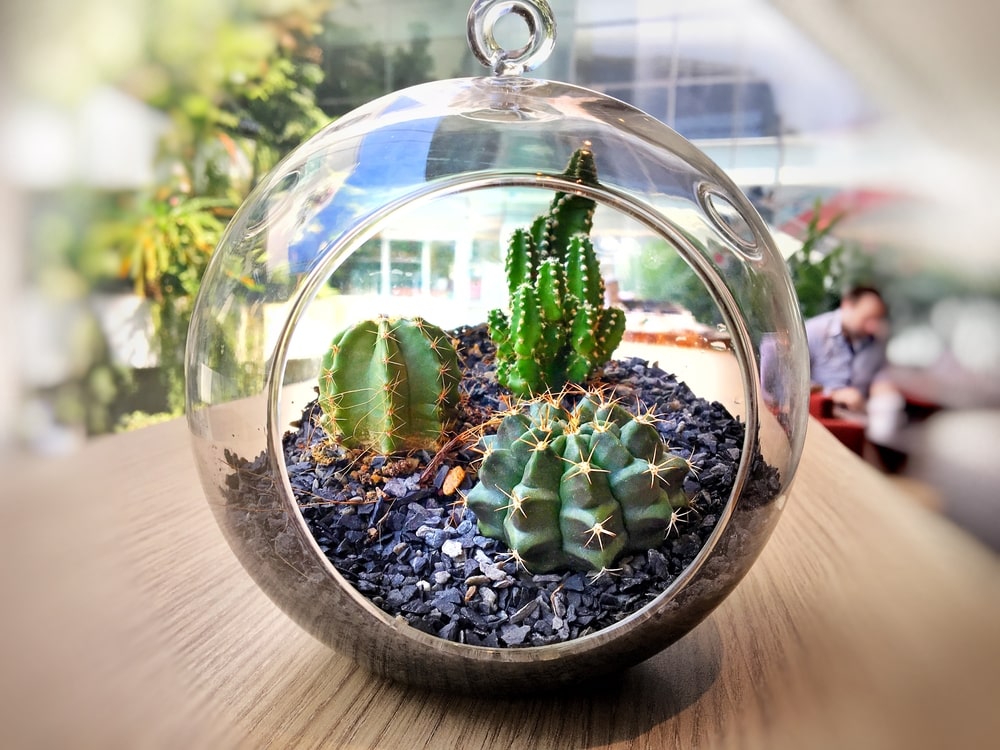A TERRARIUM IS A FUN WAY TO ENJOY INDOOR PLANTS WITH LITTLE MAINTENANCE
Terrariums are miniature plant habitats, especially useful for growing plants with high humidity requirements. Our present-day terrariums, from the utilitarian fish tank to more decorative glass containers, are direct descendants of the Victorian Era “Wardian Cases,” large containers used to grow or transport rare or delicate plants discovered on the scientific expeditions of the day.
HERE ARE SOME TIPS AND INFORMATION FOR TERRARIUM GARDENING
All terrariums should have clear glass or plastic, so as not to interfere with plant photosynthesis. They also need to be waterproof. And it is helpful if the container meeting these criteria can be used for terrarium making, from fish tanks to large brandy snifter, glass jars to large bottles. Fancy containers specially designed for use as terrariums are also available.
After deciding on the type of terrarium, select some plants that will be suitable for the growing conditions. Choose plants that have similar light and water requirements. It is best to choose low growing, slow-growing, or small-leaved and tightly branching plants so that pruning or replacement will be kept to a minimum.
You will need drainage material to line the bottom of the container. Perlite, aquarium gravel, small marble chips or pea gravel, and coarse sand all provide good drainage. You will also need horticultural charcoal to eliminate a sour smell as the potting medium breaks down.
Choose a potting medium appropriate to the type of terrarium you are making. Succulents will need a very well-draining mix, while a jungle planting will need more organic matter.
Collect any decorative items you wish to include in the terrarium, such as rocks, seashells, decorative gravel, or small objects such as ceramic figures.
TIPS FOR ASSEMBLING & CARING FOR A TERRARIUM
- Start with a clean, dry container.
- Cover the entire bottom with the drainage material at least an inch or more.
- Add a layer of horticultural charcoal.
- Add a 2” or better layer of pre-moistened potting soil.
- Add the plants and firm the plants into its new location.
- Now, the plants should be watered in with a light misting.
- Water the terrarium whenever the soil feels dry when you press your finger lightly into the soil.
- Terrarium plants should grow slowly, so they will need very infrequent fertilizing. If plants do become overgrown, use scissors or small pruners to clip them back to a reasonable size.
- Keep the walls of the terrarium clean to maximize the amount of light available to the plants. It is best to use plain water to wipe the walls clean. Try not to use a commercial glass cleaner on the inside walls.
At The Great Big Greenhouse in Richmond –
THIS SATURDAY WE ARE CONDUCTING A SUCCULENT TERRARIUM MAKING WORKSHOP. THE CLASS IS FULL. HOWEVER, YOU ARE WELCOME TO COME AND OBSERVE AND AT THE SAME TIME LOOK AT OUR INCREDIBLE SELECTION OF PLANTS THAT ARE SUITABLE FOR TERRARIUM CONTAINERS

